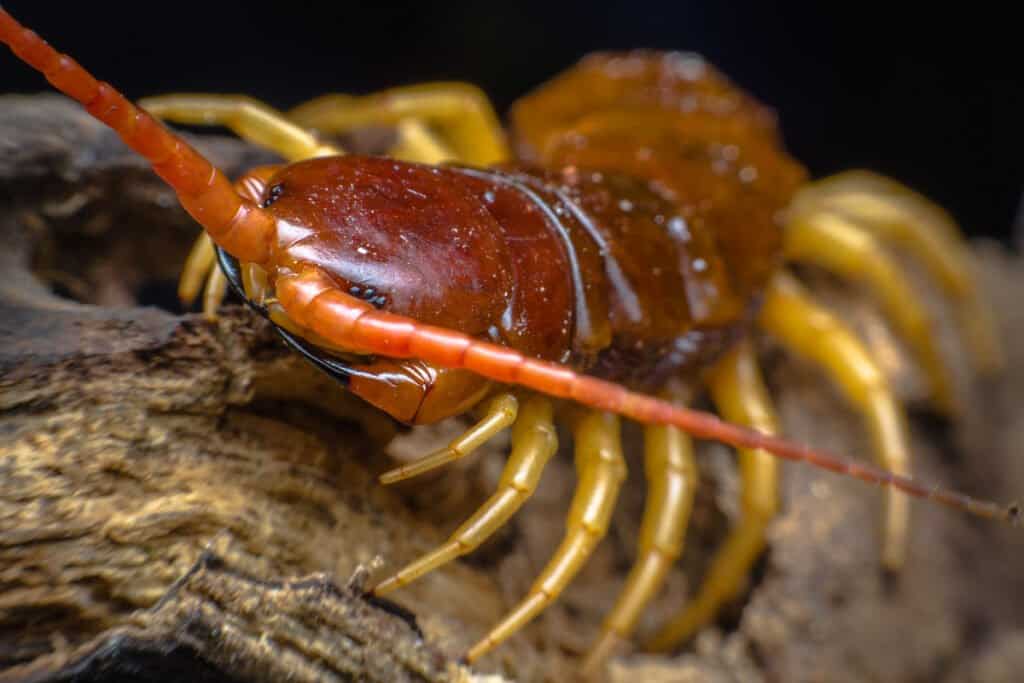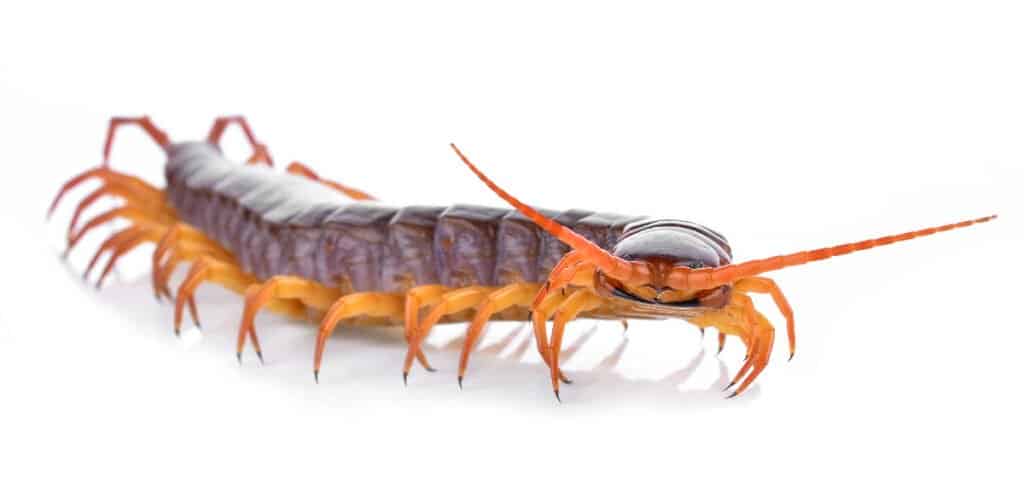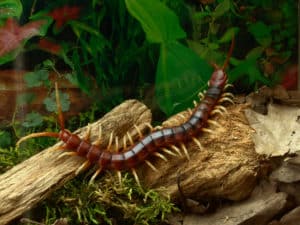Centipedes are named and known for their large number of legs. The word “centipede” originates from the New Latin prefix of “centi” meaning hundred, and the Latin word “pedis”, or “pes”, which means foot. So how many legs does a centipede have?
Strangely enough, no centipede has 100 legs since the number of their pairs of feet is actually always odd. That said, those appendages may exceed a hundred in number – or even fall far below it. Centipedes are made up of segments, each of which bears a pair of legs.
The number of legs a centipede will have depends on the species it belongs to. Three thousand of them have been discovered and over 8,000 centipede types are believed to exist. Millipedes also have multiple legs (far more legs than your average centipede species) – although they don’t quite live up to their name, as no species has 1,000 legs.
In this article, you will discover all you need to know about centipedes’ legs including their number and their uses. You will also find out which centipede species has the highest number of legs and which species has the lowest.
How Many Legs Does a Centipede Have?

©pitaksin/Shutterstock.com
The number of body segments a species of centipede has will determine the number of legs on the species. Each body segment has 2 legs, unlike a millipede that has four legs per segment. Centipedes come in various sizes, colors, and are found in a variety of habitats. Some species will have more legs than others, but an adult centipede will have between 15 and 177 pairs of legs.
The number of legs a centipede has is always more or less than 100, but exactly 100. Different species of centipedes will have different numbers of legs. The largest centipede species is Scolopendra Gigantea and has 21 to 23 pairs of legs. This means it has a possibility of having 46 legs. While its legs are physically larger than any other centipede, it is not the species with the most pairs. Smaller species are capable of having more segments and thus more pairs of legs.
Centipedes With Most Legs
Geophilomorpha is an order of centipedes, with some species that are capable of having up to 177 pairs of legs. Also called soil centipedes, there is a wide range of species listed under this order. Many of them are small and use their legs to efficiently travel through the dirt. Their lifestyle and size make it easy for them to go unseen. Some scientists believe that there are around 4,000 soil centipede species, meaning most have not been found.
Types of soil centipede families:
- Himantariidae
- Linotaeniidae
- Oryidae
- Mecistocephalidae
- Neogeophilidae
- Geophilidae
Soil centipedes are smaller in size but usually have more legs and segments. They are capable of having up to 177 segments. In soil, leaf litter, and under natural debris is where soil centipedes are often found. They live in different regions of the world, and can even be found in your backyard.
Soil centipedes are in most areas, but are burrowers and spend their time out of sight. They use the same digging technique as an earthworm, by expanding and contracting their body. Some species of soil centipedes are also blind and rely on their antenna to navigate. Soil centipede legs are much smaller than other species of centipedes. They look similar to other species and just have smaller bodies.
The House Centipede and Its Legs
How many legs does a centipede belonging to the species Scutigera coleoptrata have? Only 15 pairs of legs. Also known as house centipedes, these chilopods are the most common centipede species and also live in areas with humans.
Members of this arthropod subgroup have the least legs when compared with other centipede species and even appear slightly different. Their legs are much longer relative to their body size which makes them look larger.
Centipedes Get More Legs As They Grow
Centipedes will molt and grow as they age. Some species will grow more legs whenever they molt. That means younger specimens will have fewer pairs of legs, but grow more as they age. They can also grow legs back if any are damaged, which is why some legs may look shorter than others.
Why Centipedes Have So Many Legs

©Mr. SUTTIPON YAKHAM/Shutterstock.com
Centipedes are ground dwellers, and their many legs help them traverse across the forest floors and other habitats. What helps the centipede the most is not only the many legs but body segments that they are attached to. Centipedes can move and turn themselves in many different directions. This helps them travel and contort into any shape that they need. When eggs are laid they are sometimes protected and helped by the mother with her legs.
Centipedes are also seen using their legs to help capture their prey. Their legs help to control prey and swarm them. Small insects, frogs, lizards, and small mammals are some prey they will grab and hold onto with their legs. They are ruthless hunters, and skilled at sneaking up on unexpecting prey. Their venom is not deadly to humans but can kill small animals.
Myriapods are one of the first land-dwelling animals, and their legs have helped many species survive. Myriapods are over 428 million years old as a species, with a part of their success being due to their legs.
How Centipedes Differ From Millipedes In Body Type
Millipedes and centipedes have similarities but their bodies are designed differently. Both are made up of segments but centipedes have two legs per segment, while millipedes have four. Millipedes also don’t use their legs for hunting but can curl into a tight ball since their legs are smaller. Millipede’s legs are located under their body, while centipede legs will protrude outward on their side. Millipedes also have far more legs than a centipede. The Illacme plenipes is a species of millipede that has the most legs of any Myriapod and is capable of having up to 750 legs.
The photo featured at the top of this post is © ananth-tp/Shutterstock.com
Thank you for reading! Have some feedback for us? Contact the AZ Animals editorial team.






